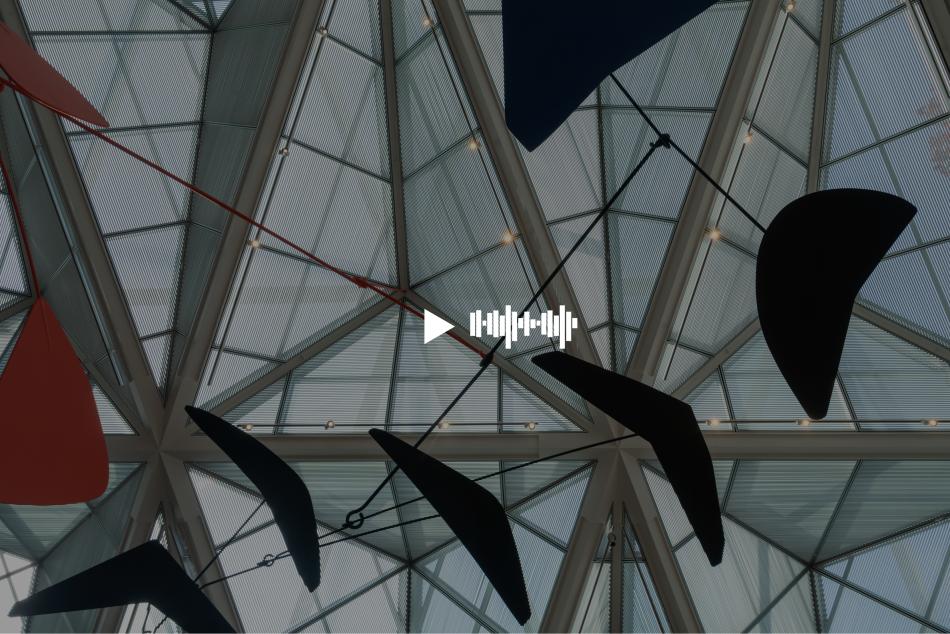NICOLAI CIKOVSKY:
“Today, Thomas Cole is best remembered as the father of the celebrated Hudson River school—those mid-19th century painters who produced landscapes devoted to the glories of the American wilderness. But during his own lifetime, the Voyage of Life series you see around you was Cole’s most famous work. He painted two versions of it. This is the second.”
“Cole said that he never wanted to be a “mere leaf painter.” He had always had in mind a higher, more serious form of art, in which landscape was used in the service of history to depict particularly lofty themes from literature, mythology, or the bible. We tend now to be embarrassed by such grand ambition. But Cole wasn’t thinking small—the series that preceded this one was called The Course of Empire. Here, he tells another story so big, so profound that it can’t be contained in a single canvas.”
“The Voyage of Life traces the travels of a Christian everyman down the Stream of Life in extravagant allegorical terms—from Childhood through Youth, Manhood and Old Age. I have always found this third stage, Manhood, particularly appealing, for it is wonderfully, poignantly autobiographical. Manhood was the stage of life Cole himself was experiencing when he painted these works, and above the boat, hovering in the dark clouds; we see the temptations that beset the voyager in his direst moments—suicide, alcoholism, and murder. His only hope is not in his own strength but in Heaven. His guardian angel - the voyager is unaware of him—gazes calmly from above, overseeing his passage.”
“The tiller has been torn away and the boat is out of control. It heads down the swollen stream into the turbulent rapids amidst what Cole called “a rugged and dreary landscape.” The decorative figures adorning the prow seem just as concerned as the man himself with what’s going on. Time is literally running out, and the figurehead looks desperate as she watches the last grains of sand fall through the hourglass. The figures surrounding her gaze ahead, terrified at the prospect of the fearsome rapids before them.”
“Cole wrote wonderful texts to accompany these paintings, explaining in the most precise and colorful detail what each individual picture is about.”
“We’ve placed them on the walls beside each work. But if you’d like to look and hear Cole’s words at the same time, just step over to the final painting, Old Age, where the voyage ends and the boat floats in still water.
NICOLAI CIKOVSKY:
“You should now be at the painting Old Age.”
ACTOR:
“Portentous clouds are brooding over a vast and midnight Ocean and the boat, shattered by storms is seen gliding over deep waters. The voyager, now an old man, looks upward to an opening in the clouds, from whence a glorious light bursts forth, and angels are seen descending the cloudy steps, as if to welcome him to the Haven of Immortal Life.”
NICOLAI CIKOVSKY:
“Cole himself, unfortunately, did not live to see old age. He died at the age of 47, his passing was mourned throughout the country.”
NARRATOR:
Cole painted this Voyage of Life series on a trip to Rome in the winter and early spring of 1841-42. Back in America he showed the pictures to paying audiences in Boston and New York. But the proceeds were disappointing, so he sold the series to George K. Shoenberger, who installed them in his new 51-room mansion in Cincinnati, Ohio. There they remained in obscurity for almost a century, as the house became a sanitarium, then a hospital.
In 1962, the series was rediscovered in the hospital’s chapel. Later, the original frames turned up in an old age home, covered with radiator paint. They were restored and returned to the canvases.
Probably designed by Cole himself, they reinforce the Christian symbolism of the pictures. Grapes, for example, refer to the sacrament of the Eucharist in which, Christians believe, the wine is transformed into the blood of Christ. The grapes also refer to the toil of man in the vineyards of the Lord. Flowers and fruit suggest fertility and life. Ivy recalls Eternity because it stays green all year long.
Cole painted an earlier version of the series for a New York banker in 1839. He feared the general public would never see it. But when it was exhibited in New York, it was seen by 500,000 people—half the population of the city. Later, 16,000 prints were distributed, becoming as popular as engravings of George Washington had been earlier in the century.



